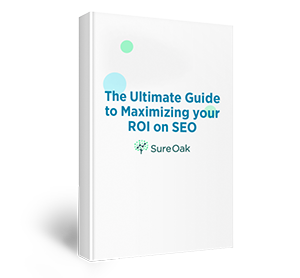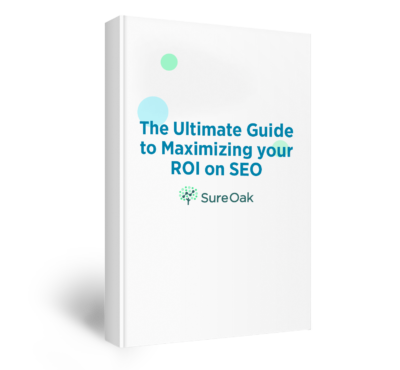Mistakes are common in the world of SEO. Most SEO mistakes won’t destroy your rankings. But, there are a few common SEO mistakes that could be costing you a lot of traffic.
Wondering why your pages aren’t ranking at the top of Google? You might be making one or more of these common SEO mistakes that we frequently encounter. We’ll show you how to avoid them to get the search traffic you deserve.
Mistake #1: Choosing the Wrong Keywords
Keywords are the foundation of SEO–they have the power to make or break your success. Keywords are not only the homing signals that search engines use to categorize and understand your site and content, they are what connects you directly to your audience.
A keyword represents data for how a searcher asks a query—to find information, navigate, or make a transaction. Keywords range from generic to highly focused and targeted.
What are generic keywords? Generic keywords are a broad description, they focus on a topic at large. Keywords that are more highly focused tend to be more descriptive of the question at hand, these are commonly called long-tail queries or keyword phrases.
Targeting a keyword is more than just writing on a topic that is valuable to your brand. Targeting a keyword is about satisfying the searcher and positioning your brand as the solution to their pain point or query—whether it be valuable information they need or an actual product.
We often encounter websites targeting generic keywords with too much SEO competition in their digital content production and strategy. It takes a long time to see results from these keywords, and the traffic usually doesn’t convert as well.
For example, consider an e-commerce website targeting the keyword “protein powder.”
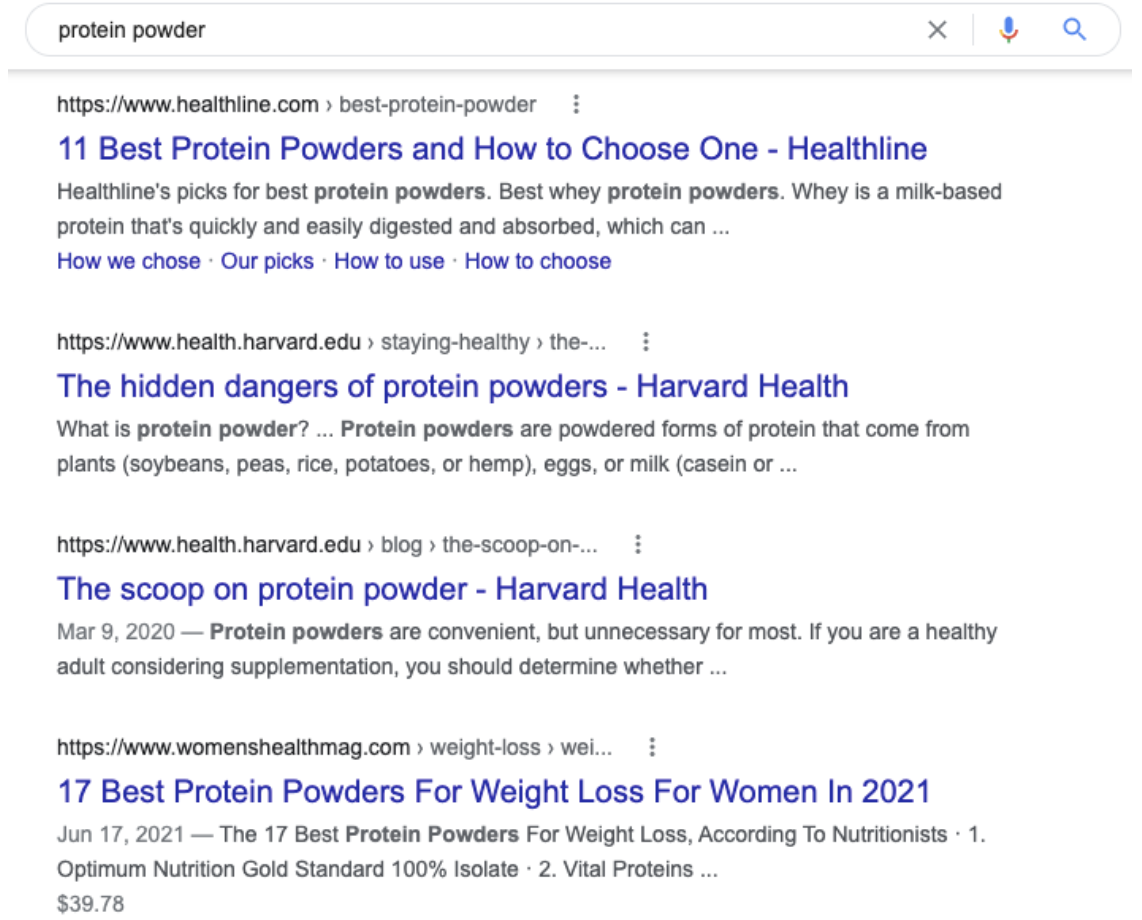
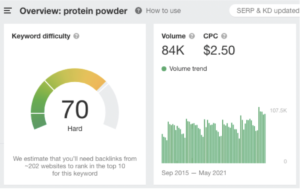
The top Google results for this keyword are not e-commerce stores. They are informational resources, and only two of them demonstrate commercial intent.
Ahrefs estimates that our example website will need over 200 backlinks just to rank on the first page!
Now, consider the top rankings for the keyword “buy protein powder in bulk.”
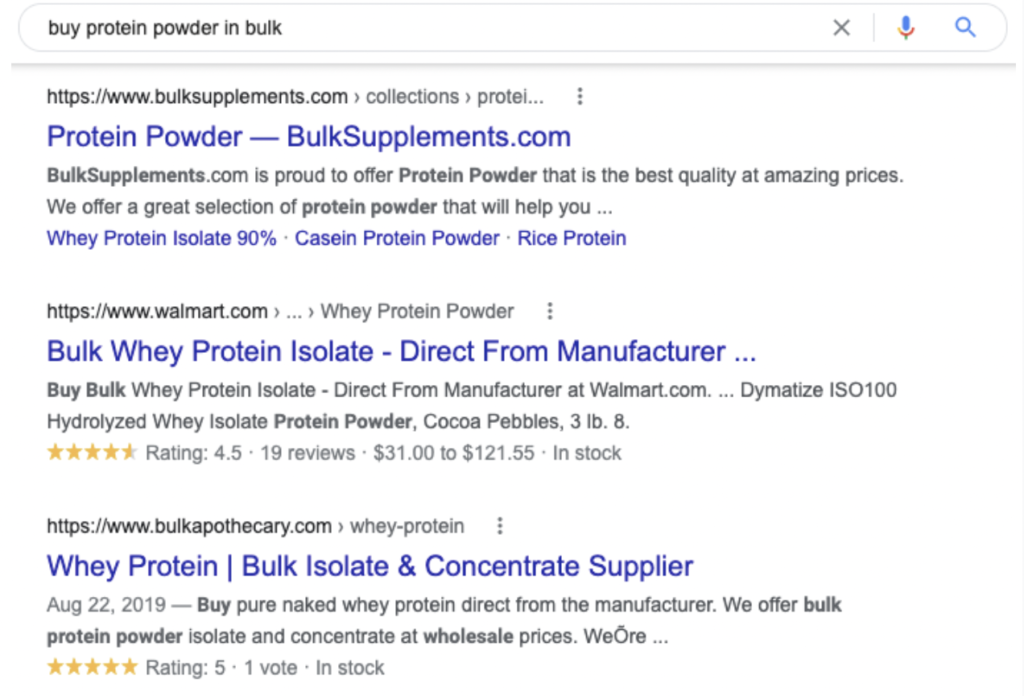
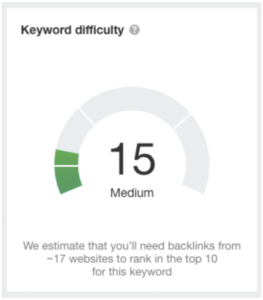
The top rankings for this keyword are all e-commerce stores, demonstrating strong commercial intent.
Instead of 200+ backlinks, our example website will only need about 20 backlinks to rank for this keyword!
While the keyword “buy protein powder in bulk” doesn’t offer as much search volume as “protein powder,” it does provide a few benefits:
- The keyword is less difficult to rank for, making it easier to win, get on the first page, or even better, the top of the SERP.
- The keyword phrase is a transactional query, which provides the opportunity to more directly target qualified traffic, satisfy their intent, and result in a much higher conversion rate.
Want to find “golden opportunity” keywords like this? Follow these steps:
1. Consider the journey that might lead a buyer to your website.
Start by brainstorming all the possible words and phrases that people will use to find what you offer. Try your best to think like your target customer.
- What are your audience’s earliest pain points?
- What words will they type into Google to find solutions?
- What will they Google next?
Knowing your audience’s problems and the semantic language they use is crucial during keyword research.
2. Perform research to expand your keyword list.
Perform advanced keyword research to map out a keyword strategy. Use a tool like Ahrefs or Semrush to perform competitor analysis for the keywords your competitors are using.
Look at your Search Console data to see what keywords are already leading visitors to your website.
If you have a search feature on your website, examine the logs to see what people are searching for within your website.
3. Use a keyword tool to estimate traffic potential and competition for each keyword.
This data will help you determine the risk/reward ratio for each potential keyword opportunity. However, don’t rely on this information too much. Keyword search estimates are clues, not concrete, which is why they should only be used as general guidance.
4. Compile your keyword list and break it into segments.
For content planning, it’s helpful to put each keyword into one of three categories:
- Long-tail keywords: this is the “low-hanging fruit” category. It usually contains longer phrases with less traffic. Because these keywords have less competition, ranking for them will be an easier and quicker process.
- Head keywords: this category is for broader generic terms with the most competition. They usually get more traffic, but they’re also the hardest to win. You can use these keywords to determine the public’s interest level for general topics.
- Midrange keywords: this category is for everything in between. It’s not “easy” to rank for these keywords, but they won’t be as difficult as your head terms.
When it’s time to start creating your content, we recommend starting with the long-tail keywords and working your way up. This will allow you to generate targeted search traffic while you wait to rank for your more competitive phrases.
Mistake #2: Ignoring Your Audience
Serving your audience is a fundamental principle of SEO, but that wasn’t always the case.
Ten years ago, ranking in Google was a “robots-first” game. Instead of focusing on the user, old-school SEOs tried their best to please Google’s algorithm.
But the problem with the “robots-first” mentality is that it leads to keyword stuffing, PBN backlinks, and other spammy practices that pollute the web instead of improving it. These common SEO mistakes should be avoided at all costs.
Google’s evolution and continued focus to improve the quality of its search results have brought about a few algorithm updates that seek to prohibit and eliminate black-hat SEO techniques.
Black hat techniques are the worst SEO advice you could follow. Updates like BERT made keyword stuffing a dangerous practice, and updates like Google Penguin turn manipulative links into a penalty waiting to happen.
Over the past ten years, Google has done everything in its power to send a clear message:
If you want to succeed in the modern era of SEO, you must focus on your audience first.
Unfortunately, the “robots-first” approach of the past has left some residual effects on the landscape of SEO. Even today, we find that many websites make the common SEO mistake of ignoring their audience in an attempt to manipulate the algorithm and get a quick rank.
Search intent is a hidden ranking factor that is growing increasingly important. To rank for a target keyword, it’s important to understand a person’s motivation when they are performing that search.
Tip #1: Type your keywords into Google
If you’d like to understand the user’s intent behind a Google search, the best way is to perform that Google search yourself.
- Open a private browser tab.
- Navigate to Google.com.
- Type your keyword into the search bar.
- Analyze the top results.
Google ranks pages at the top for a reason. It is in your best interest to find out why users find the top pages so helpful, as well as to consider how you can serve them better.
This entire process takes no more than ten minutes, and the time is well-spent.
Tip #2: Format your content to make it easier to digest
We often encounter content packed with big blocks of text. While it might contain valuable information, users find these pages exhausting to read, which is why they tend to increase bounce rates.
Instead of bombarding your users with information, follow these tips to increase the amount of time they will spend on your page:
- Write in short, simple paragraphs of 1-3 sentences;
- Break up different sections with skimmable and keyword-optimized headers;
- Use bulleted or numbered lists every ~500 words;
- Use different media formats to keep the reader engaged (images, videos, charts, etc).
Ditching the “robots-first” approach is the first step to getting more search traffic. Always keep the humans you’re trying to help in mind–if you make them happy, Google will respond in kind.
Mistake #3: Overlooking Backlinks
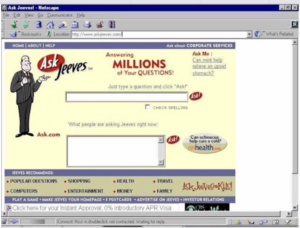
It’s hard to remember all the search engines before Google. In the early 2000s, some notable examples were Yahoo search, AltaVista, Microsoft Live, and our personal favorite – Ask Jeeves!
Back then, search engines mainly ranked web pages by looking at the number of times they mention a given keyword.
But the problem with this system was that it was easy to exploit. To rank #1 on Yahoo, one could simply copy and paste their target keyword hundreds of times.
To address this issue, Google’s founders developed a formula called PageRank, which introduced links into the ranking equation. The idea behind PageRank is simple: if important websites are talking about you, then you must be important too.
This concept had a massive impact on the quality of Google’s search results, and it’s largely responsible for Google’s success as a search engine. After all these years, PageRank–or at least the concept behind it–is still important today.
Don’t believe us? Look at these recent findings from independent studies:
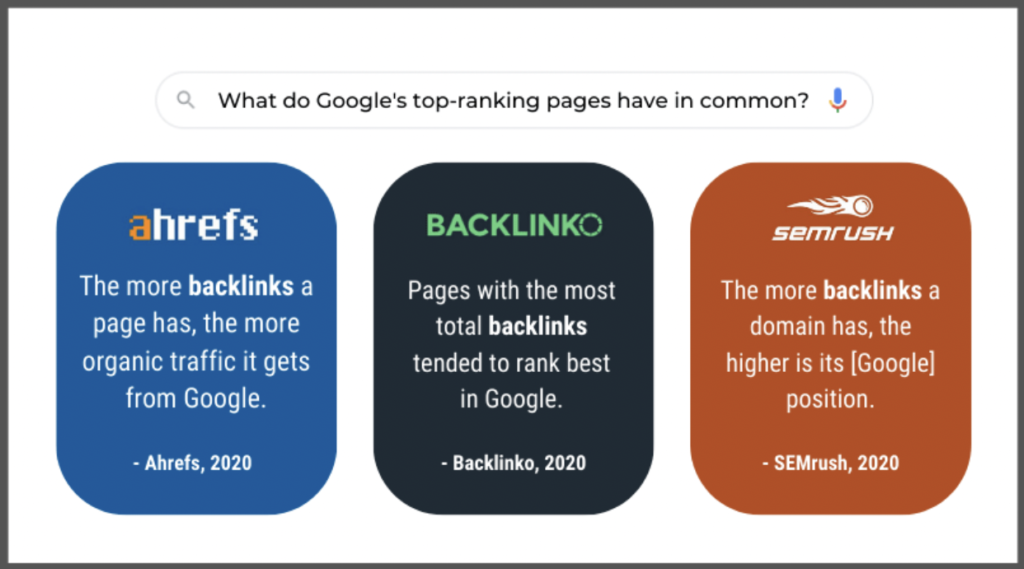
All three of these studies come to the same conclusion: the more backlinks you have, the higher your rankings will be.
But here’s the bitter truth about backlinks:
In many circumstances, backlinks won’t come unless you earn them, and you can’t earn them without unique, high-quality, link-worthy content.
If you want to compete for high-value keywords, you can’t afford to put off-site SEO and a quality content strategy on the backburner.
Tip: Create an intentional strategy to earn new backlinks
We won’t lie: building links for your website can be difficult.
But the facts don’t lie either: backlinks are critical to your SEO success.
And if you consider secondary benefits like referral traffic and brand awareness, getting links from high-profile websites could be a game-changer for your business.
If you’re worried that you’ll never be able to match your competitors’ link profiles, you should know that quality matters just as much (if not more) as quantity.
If you’d like to know what makes a quality link, check out our Beginner’s Guide to Link Building where we break down all the different factors.
If you can build high-authority, contextual links regularly (even if it’s only one or two each week), your efforts will have a long-lasting impact on your rankings.
Conclusions
Making any of the SEO mistakes in this list will keep your website from reaching its full potential. To get higher Google rankings and more search traffic, keep our tips in mind as you create content for the web.
Additionally, it’s a good idea to run routine SEO audits to diagnose any technical issues. Check out our free SEO audit tool to find out how you can improve your website!

